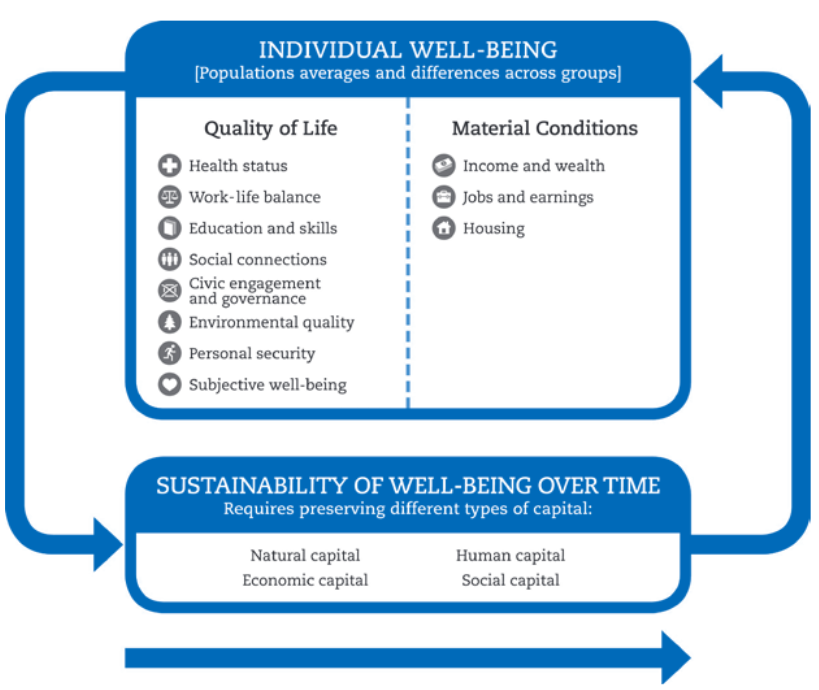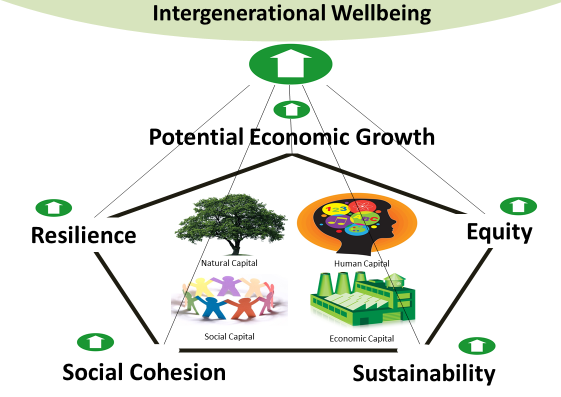Aligning Public Policy with the Way People Want to Live – The New Zealand Treasury’s Living Standards Framework
Wellbeing is being embraced by policy makers around the world and this week we welcome colleagues from New Zealand’s Treasury to discuss their Living Standards Framework.
New Zealand Treasury’s vision is to achieve higher living standards for its residents, using a much wider set of measures than just income to define wellbeing. Here, Joey Au and Girol Karacaoglu set out the Living Standards Framework:
 Girol Karacaoglu, Chief Economist Joey Au,Senior Advisor
Girol Karacaoglu, Chief Economist Joey Au,Senior Advisor
New Zealand Treasury
The ultimate purpose of public policy is to improve people’s lives, now and into the future.
We do not know how each and every individual wishes to live his/her life, nor do we wish to pass judgement on how they should be living their lives.
We can however rely on the robust findings of numerous studies, covering a large variety of countries and cultures, about the broader domains of individual wellbeing.
For example, OECD’s Better Life Initiative (BLI) [OECD (2013)] focuses on domains classified under quality of life and material conditions (Figure 1).
The Treasury’s Living Standards Framework (LSF) follows the lead of Atkinson (2015), Gough (2015), Phelps (2013), Sen (2009), and others, in emphasising that public policy can improve people’s lives now and into the future by enhancing the capabilities and opportunities, as well as incentives, of individuals to pursue the lives they have reason to value. It provides a guide for thinking about good economic, environmental and social policies in an integrated way and is illustrated in Figure 2.
Good public policy focuses on ensuring that the wellbeing-generating capacity of capital assets (human, social, natural and economic capital) is sustained or enhanced – that is: not eroded by current generations at the expense of future generations (sustainability);shared in a manner consistent with sustaining or enhancing the capital base (equity); no particular social group(s) impose their concepts of wellbeing on others, respecting others’ rights to live the kinds of lives they have reason to value (social cohesion); capital assets are protected against major systemic risks (resilience); and the material wellbeing generating potential of these assets (“comprehensive wealth”) is enhanced (raising potential economic growth).
These five dimensions of the LSF define the boundaries of society’s wellbeing frontier, and are therefore of legitimate interest for a public policy that aims to push out these boundaries, while also being cognisant of their interdependencies.
Treasury’s stylised LSF model, while drawing on the work of Arrow et al (2012), is intended to serve as a policy-guiding tool. It weaves together threads from the wellbeing, human needs, sustainable development, endogenous economic growth, and directed technical change (favouring “clean” technology) literatures [Karacaoglu (2015)].
The model suggests that a time-consistent policy package needs to be strongly grounded in the history, cultures and values of the society it is intended for. Universal access to basic income, and to health services, housing and education, provides the necessary platform. A set of economic, social and environmental infrastructures (including strong institutions) act as enablers, but also provide the incentives to participate productively in economic and social life.
In practice, to design effective and efficient public policies, we need to know which aspects of living standards are most important to people, and be able to assess the trade-offs they are willing to accept. Au et al (2015) demonstrate an application of the survey-based methodology we are increasingly using to make these assessments. Au and Karacaoglu (2015) provide a summary of the applications of the LSF in the Treasury’s policy advice.
→ NZ Treasury Living Standards Framework

